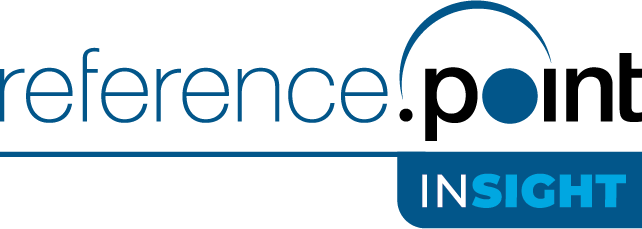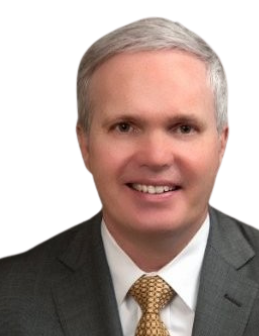
Turning KYC on its head to drive business growth and improve a company’s risk profile
August 2022
Straight To The Point
Banks and other financial institutions are under increased pressure. With heightened concerns from the U.S. treasury and other regulatory bodies regarding money transfers are helping terrorists, drug traffickers and other bad actors, companies are being held to the fire when they don’t rid their organization of non-compliant advisors. In fact, according to Forbes, financial institutions that lacked compliance and due diligence related to financial crimes were fined $2.7 billion (cumulative) in 2021.
In response, the industry has spent tens of millions of dollars to stand up Anti Money Laundering (AML) programs – but many are struggling to get their desired results. These current programs are disconnected from the business and, conversely, live within the compliance department, making Know Your Customer (KYC) more of a “check the box” activity versus an opportunity to drive business expansion and revenue growth.
At the same time, banks are continuing to digitalize at an unprecedented pace to shore up competitive differentiation and tap into omnichannel marketing strategies that attract a broader range of customers. The best companies will turn their KYC efforts from a first line of defense to a first line of offense. Reference Point explores how organizations can dovetail compliance needs with business goals in a way that fuels cultural change, creates ownership at the client facing level, and drives efficiency—all while achieving goals for more multichannel sales that reach a multitude of customers.
Introduction
“Imagine a world where bankers onboarding their new clients ask the right questions from the start. This helps position the organization to capture data about a client that will enable thoughtful decisions and when a client is accepted into the organization that data will be useful for years to come—helping with cross sell efforts that make clients stickier over time.”–John Hogarty, former Managing Director and COO Bank of America/Merrill Lynch, Global Wealth & Investment Management
AML programs have been in effect for years within Wealth & Asset Management firms with the KYC process as the foundation. Yet, while traditional KYC processes involve a range of due diligence measures, along with ongoing screening and monitoring as customers engage with the services that a particular firm offers, they are often led by compliance and risk functions. By shifting the organizational culture to design a comprehensive onboarding process where the business takes ownership of KYC, organizations will allow both bankers and investment advisors to own the process in a way that can fuel growth while satisfying compliance.
Regulators have long been emphasizing that true compliance starts with the first line of defense—bankers who are onboarding new clients. However, this can be a difficult mindset shift for executives that are traditionally focused on “winning” the business rather than protecting the organization against financial crime and subsequent actions. But, setting this tone from the top where the salesperson that signed on the relationship takes ownership of the record is viewed as best in class. To ensure this occurs, the emphasis should be on the importance of capturing information that builds relationships between bankers or investment advisors and their clients. Embedding this early fact finding into the process can lead to deeper lifetime value of the client with a much broader view of opportunities across multiple channels.
“When KYC includes the right questions from the start, compliance will take care of itself. Furthermore, this approach to KYC allows for onboarding a complete relationship as opposed to a transaction, allowing bankers and advisors to build a profile that lends itself to offering a more holistic financial solution across multiple channels within the organization—no matter who owns the initial interaction”
–Patrick Campion, former leader at Deutsche Bank, HSBC and Citigroup
Leveraging technology and data to improve the process is key. Robust processes mean enormous amounts of data. With the right technology, organizations can instill a rigorous KYC process that allows for identity verification, monitoring overtime, and screening.
This approach includes deploying a comprehensive data strategy as a key tool to shifting your risk profile. Often Banks are considering data only from a process improvement perspective. However, utilization of data across organizations can allow them to create a better risk management profile and ultimately shift a company from being reactive to proactive with regard to regulatory scrutiny.
And the benefits are two-fold. When companies rethink ways of working to create a better client and employee experience, while adhering to regulations, the results can be beneficial—for the bankers, advisors, organization, and clients. The banks will not only have KYC and AML programs that are integrated across core banking processes, but they will also enable a stronger multi-channel and multi-product offerings approach to clients, while protecting the bank against risks and regulatory concerns.
For many institutions this type of transformation is easier said than done. Undoubtedly, transforming processes effectively and efficiently can be disruptive, and complicated by company culture, deeply embedded legacy systems, organizational silos, and much more. Here are some key challenges to expect:
Key Challenges
- Holistic View: While designing KYC processes, firms often develop onboarding from a singular product perspective. Instead, firms must look at the lifetime value of the client and how the firm can support that client across all products. Without a holistic view in onboarding, firms may ask clients redundant and unnecessary questions later on in the lifecycle.
- Design: Ensuring your organization has the proper skills to design a program that has the right training, documentation (policies/procedures), and support to minimize burden of the salesperson while establishing effective compliance. Effectively designing a program that makes sure compliance is in place, but not at the cost of new business development.
- Employee Engagement: Bankers/1st LOD do not want to ask their client uncomfortable questions (e.g., previous litigation, etc.). While first line employees are often tied up in their primary roles / functions around bringing in revenue, they do not want to take on the additional role of acting as compliance. It comes upon management to make this change easier to adapt.
- Sustainability: Some large national/global banks have built unsustainable solutions in response to continued regulatory scrutiny. While this may have helped them get through the remediation, it may be neither sustainable nor efficient as processes are often using increased manpower. There is not enough embedded in core business processes to maintain operations with the “band-aids” in place.
- Continuous Improvement: After establishing an initial client profile, firms must continuously assess the risk and health of the client relationship. Without continuous monitoring for existing clients, there may be cause for both reputational and firm risk.
Best Practices & Opportunities
Change is possible. Some best practices that we have observed include:
Delivering a multi-channel and multi-product integrated business model
During client onboarding, firms must step back and envision the core business processes and the types of questions required to ensure they are providing the most relevant advice and delivering the full capabilities of the firm. Once the full footprint of the client relationship is well understood, the front line can ensure they are performing the proper activities to deliver the firm in a way that satisfies the needs of AML. By capturing the full profile at once rather than just as an individual business, the front line can minimize risk for the firm and minimize unnecessary secondary steps for the client.
Training and prepare the 1st LOD
The strongest defense against AML risk starts with selecting the right clients. That duty rests with the first line client-facing employees. The first line owns the risk and is the strongest defense. These are the same people whom you rely upon to grow your business, so the process must be made relatively easy and efficient to minimize the client disruption.
It is incumbent upon leaders to build an end-to-end experience that equips the first line with the knowledge and tools to make right decisions thereby enabling them to grow the business safely for shareholders and meet the expectations of senior management as well as regulators. It is important to educate the first line in how to ask the required questions in a way that shows the firm’s commitment to safeguarding the client and the firm. A training program that incorporates skill-building through active engagement and role playing can build confidence in their ability to obtain sensitive information from the client without appearing intrusive. This allows them to build trusted relationships with the client without appearing intrusive and protecting both the client and the company.
Utilizing data to become predictive in nature
There is an opportunity to utilize data to create a better risk management profile and risk scoring model for clients. Firms can develop comprehensive client profiles based on the complete client ecosystem and specific data identified during onboarding. Data utilization in risk management can allow organizations to periodically review the client’s information and transactional details to ensure they are current and in line with the client’s expected activity. This allows firms to not only assess whether there is potential risk, but also measure the health of the relationship. This ongoing monitoring and predictive analytics can lead to decreased regulatory scrutiny, improved employee experience, and improved customer experience.
Expanding the use of end-to-end data across business requirements
While data and analytics is often used for business process improvement and client experience, it may be overlooked as an aid in regulatory reporting and compliance. While end-to-end data is being reviewed, take advantage of the data and analytics capabilities to improve regulatory reporting processes. Additionally, firms should consider documenting and enforcing a data strategy that is all-encompassing.
Conclusion
The financial and reputational impact of organized crime and dark money is still a significant shadow on the financial system. Many financial institutions are looking for a better way to address these risks while offering best in class customer service to low-risk customers. Outside of the regulatory risks, financial institutions with inadequate KYC procedures also risk negatively affecting their customers’ experience of their services. A robust KYC program enables organizations to truly build their relationships with customers while building detailed risk profiles. This will allow for better, more tailored customer experiences across all interactions with the organization which fuel customer loyalty and growth overtime.
Meet the Wealth & Investment Management Team
John Hogarty
 John Hogarty has over 30 years of experience in the financial services industry with a reputation as a progressive thinker and advocate for change, possessing strong operating and execution skills. Previous roles include:
John Hogarty has over 30 years of experience in the financial services industry with a reputation as a progressive thinker and advocate for change, possessing strong operating and execution skills. Previous roles include:
- Managing Director and COO Bank of America/Merrill Lynch, Global Wealth & Investment Management
- COO of Global Wealth Management, Merrill Lynch
- Managing Director Strategy and Business Development, Global Wealth Management, Merrill Lynch
- Director, CFO Business Management/Administration for the Americas Division of Global Wealth Management, Merrill Lynch
Patrick Campion

Patrick is a senior business strategist and wealth management leader with a proven track record of leading large financial services organizations to deliver superior performance through profound change. Previous roles include:
- Wealth Management Americas Region Head at Deutsche Bank
- CEO - U.S. Private Bank at HSBC Private Bank
- New York & Connecticut Region Head at The Citigroup Private Bank
Mike McPartland

Mike has 30+ years of experience in financial services with extensive experience leading teams in mergers and transformation initiatives across organizations. Previous roles include:
- Managing Director at Citigroup
- Global Head of Residential Real Estate Lending
- North America Head, PB Lending
- US PB Fair Lending Officer
- Managing Director at JPMorgan Chase
- US Residential Mortgage Product Head, PB and WM
Table of Contents
About Reference Point
Reference Point is a strategy, management, and technology consulting firm focused on delivering impactful solutions for the financial services industry. We combine proven experience and practical experience in a unique consulting model to give clients superior quality and superior value. Our engagements are led by former industry executives, supported by top-tier consultants. We partner with our clients to assess challenges and opportunities, create practical strategies, and implement new solutions to drive measurable value for them and their organizations.